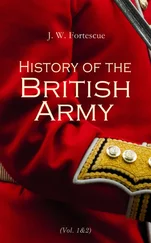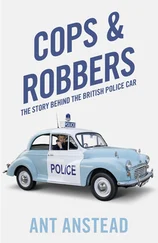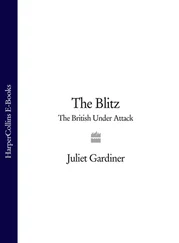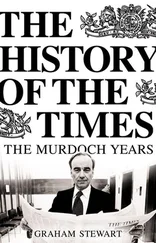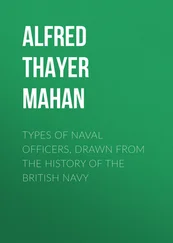J. Fortescue - The History of the British Army
Здесь есть возможность читать онлайн «J. Fortescue - The History of the British Army» — ознакомительный отрывок электронной книги совершенно бесплатно, а после прочтения отрывка купить полную версию. В некоторых случаях можно слушать аудио, скачать через торрент в формате fb2 и присутствует краткое содержание. Жанр: unrecognised, на английском языке. Описание произведения, (предисловие) а так же отзывы посетителей доступны на портале библиотеки ЛибКат.
- Название:The History of the British Army
- Автор:
- Жанр:
- Год:неизвестен
- ISBN:нет данных
- Рейтинг книги:4 / 5. Голосов: 1
-
Избранное:Добавить в избранное
- Отзывы:
-
Ваша оценка:
- 80
- 1
- 2
- 3
- 4
- 5
The History of the British Army: краткое содержание, описание и аннотация
Предлагаем к чтению аннотацию, описание, краткое содержание или предисловие (зависит от того, что написал сам автор книги «The History of the British Army»). Если вы не нашли необходимую информацию о книге — напишите в комментариях, мы постараемся отыскать её.
The History of the British Army — читать онлайн ознакомительный отрывок
Ниже представлен текст книги, разбитый по страницам. Система сохранения места последней прочитанной страницы, позволяет с удобством читать онлайн бесплатно книгу «The History of the British Army», без необходимости каждый раз заново искать на чём Вы остановились. Поставьте закладку, и сможете в любой момент перейти на страницу, на которой закончили чтение.
Интервал:
Закладка:
This however was not to happen at once. Fairfax, having obtained the Parliament's approval of his list of officers, was busily engaged with Skippon in hewing rougher material than Cromwell's troopers into shape. Many of the disbanded regiments of Essex lay ready to his hand, but they had lately shown a mutinous spirit which it required all Skippon's tact and firmness to curb. The old man, however, as he was affectionately called, knew how to manage soldiers, and the promise of regular pay, notwithstanding that one quarter of the same was deferred as security against desertion, soon brought them cheerfully into the service. Nevertheless there were, even so, not voluntary recruits enough to supply the twenty-two thousand men required by the Ordinance; more than eight thousand were still wanting, and the Committee of Both Kingdoms could think of no better means for raising them than the press-gang. This was the system which, when enforced by Charles the First, had been denounced as an intolerable grievance, and it was not less violently resisted when sanctioned by Parliament. The Government, however, carried matters with a strong hand, and a couple of executions soon brought the recalcitrant recruits to submission.
The scene of the making of the New Army which was destined to subdue the King was, by the irony of fate, royal Windsor. It is on the broad expanse of Windsor Park and on the green meadows by the Thames, before the wondering eyes of the Eton boys, that we must picture the daily parade of the new regiments, the exercise of pike and musket and the assiduous doubling of ranks and files, old Skippon, gray and scarred with wounds, riding from company to company and instituting mental comparisons between them and the English soldiers of the Low Countries, and the younger sprightlier Fairfax, still but three-and-thirty, watching with all a Yorkshireman's love of horseflesh the arrival of troopers and baggage-animals. Every day the scene grew brighter as corps after corps received its new clothing, for the whole army, for the first time in English history, was clad in the familiar scarlet. Facings of the colonel's colours distinguished regiment from regiment; and the senior corps of foot, being the General's own, wore his facings of blue.[164] Thus the royal colours, as we now call them, were first seen at the head of a rebel army.
The senior regiment of horse was also in due time to be clothed in the same scarlet and blue. For Cromwell's two regiments of horse had been selected, as was their due, to be blent into one and to take precedence, as Sir Thomas Fairfax's, of the whole of the English cavalry. In this same month of April the regiment was in the field, turning out quicker than any other corps on the sounding of the alarm, while the "lovely company" of which the colonel had boasted, now called the General's troop, was distinguishing itself above all others. Modern regiments of cavalry that wear the royal colours need not be ashamed to remember that they perpetuate the dress of Oliver Cromwell's troopers. Excluded though Cromwell was from the making of the New Model Army, he was none the less its creator, for it was he who had shown the way to discipline and regimental pride.
It is now necessary briefly to sketch the organisation of the New Model. Beginning therefore with the infantry, the foot consisted of twelve regiments, each divided into ten companies of one hundred and twenty men apiece. As all the field-officers, even if they held the rank of general, had companies of their own, the full number of officers to a regiment was thirty: colonel, lieutenant-colonel, major, seven captains, ten lieutenants and ten ensigns. Each company included moreover two sergeants, three corporals, and one, if not two, drums.[165] The privates were divided as usual into an equal number of pikemen and musketeers: the weapons of officers being, for a captain, a pike; for a lieutenant, the partisan; and for an ensign, the sword. Since Skippon, a veteran of the Dutch school, was at the head of the infantry, it can hardly be doubted that the Dutch system of drill was preferred to the Swedish. Gustavus Adolphus, it must be remembered, was chiefly concerned with the Scots; while the contemporary drill books of the English prefer the teaching of Maurice of Nassau. It is therefore reasonably safe to conclude that the normal formation of the infantry of the New Model was not less than eight ranks in depth.
The cavalry consisted of eleven regiments, each of which contained six troops of one hundred men. Here again every field-officer had a troop of his own, so that the full complement of officers to a regiment numbered eighteen, namely, colonel, major, four captains, six lieutenants, and six cornets. Three corporals and a trumpeter were included among the hundred men; and the admirable system which sorted each troop into three divisions, each under special charge of an officer and a corporal, was in full working order. In the matter of drill and tactics, the English cavalry was before rather than behind the times. The modified shock-action of Gustavus Adolphus had, under the influence of Rupert and Cromwell, been virtually superseded. The men indeed were still armed, according to the old fashion, with iron helmet and cuirass, and still carried each a brace of pistols as well as a sword; but they were instructed to trust to their swords in the charge, and to use their fire-arms only in the pursuit. Gustavus had formed his horse as a rule in four ranks; Rupert fixed the depth at three;[166] the Parliamentary officers went so far as to reduce the ranks to two, sacrificing depth to frontage, and trusting to speed, we cannot doubt, to overcome weight. Last and most daring innovation of all, they abolished the file as the tactical unit of the troop and substituted the rank in its place.[167] No better testimony to the improvement of English discipline could be found than this reduction in the depth of the ranks of cavalry. For once it may be said that the English horse stood in advance of all Europe.
As regards the duties of reconnaissance, not a treatise on cavalry omits to mention that it is the function of the horse to scour the ways in advance of an army; but there are no precise directions as to the manner of fulfilling it. Cromwell's constant references to a "forlorn" of horse show that he employed advanced parties regularly, and attention has already been called to the efficiency of Rupert's patrols. There is no evidence, however, that the men received any instruction in the matter of reconnaissance, and it is only from the Royalist Vernon that we learn that vedettes were posted then, as now, in pairs.
The dragoons of the New Model seem, in spite of a resolution of the Commons that they should be regimented, to have been organised in ten companies, each one hundred strong. Their officers were a colonel, a major, eight captains, ten lieutenants, and ten ensigns. The dragoons were mounted infantry pure and simple, riding for the sake of swifter mobility only, and provided with inferior horses. They were armed with the musket and drilled like their brethren of the foot; their junior subalterns were called ensigns and not cornets, and they obeyed not the trumpet but the drum. Their normal formation was in ten ranks of ten men abreast. For action, nine out of the ten dismounted, and linking their horses by the simple method of throwing the bridle of each over the head of his neighbour in the ranks, left them in charge of the tenth man.[168]
Next we must glance at the Artillery which, together with the transport, was comprehended under the head of the Train. The only organised force of which we hear as attached to the train is two regiments of infantry and two companies of firelocks, which were used for purposes of escort only. The firelocks were distinguished from the rest of the army by wearing tawny instead of scarlet coats, and seem therefore to have been a peculiar people, but the immediate connection of flint-lock muskets with cannon is not apparent. The truth seems to be that the English were behind the times in respect of field artillery, and indeed we hear little of guns, except siege-cannon, during the whole period of the Civil War. English military writers of the period rarely make much of artillery in a pitched battle. They recommend indeed that the enemy's guns should be captured by a rush as early as possible, and they generally agree that cannon should be posted on an eminence, since a ball travels with greater force downhill than uphill. On the other hand, it was objected even to this simple rule that if guns were pointed downhill there was always the risk of the shot rolling out of the muzzle, so that in truth the gunner seems to have been sadly destitute of fixed principles for his guidance in action.
Читать дальшеИнтервал:
Закладка:
Похожие книги на «The History of the British Army»
Представляем Вашему вниманию похожие книги на «The History of the British Army» списком для выбора. Мы отобрали схожую по названию и смыслу литературу в надежде предоставить читателям больше вариантов отыскать новые, интересные, ещё непрочитанные произведения.
Обсуждение, отзывы о книге «The History of the British Army» и просто собственные мнения читателей. Оставьте ваши комментарии, напишите, что Вы думаете о произведении, его смысле или главных героях. Укажите что конкретно понравилось, а что нет, и почему Вы так считаете.



